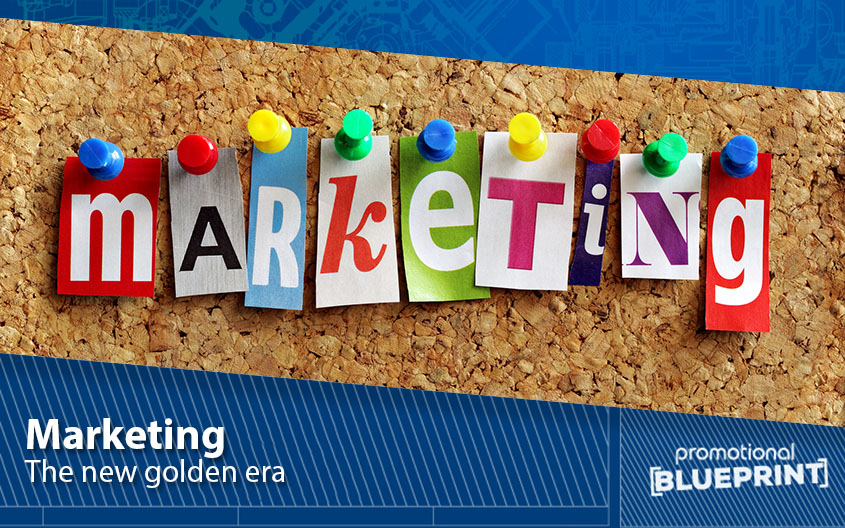
It’s undeniable that 2020 has been a year when everything changed. Lockdown shifted the fabric of society itself, altering how people interact, how they socialise, and how they do business. One of the most prominent trends that emerged during the pandemic was online shopping.
Because people couldn’t physically go out to get their necessities, they resorted to the internet to meet their needs. This pushed brands to move their business to online platforms, and alter their marketing strategies to suit this new medium.
Admittedly, this wasn’t easy, and a lot of companies were forced out of business due to a lack of traction and budget cuts. However, many other companies survived. What’s more, they figured out ways to overcome the limitations of lockdown and thrived.
Their success proves that the pandemic didn’t completely ruin marketing. It transformed into something new and exciting. And brands looking to achieve the same success should welcome this new golden age of marketing and get with the times!
How the Pandemic Affected Marketing Tactics
It’s undeniable that the pandemic impacted people’s lives. The world was forced to retreat into their homes and move all their interactions to digital platforms. In less than two years, apps like Zoom, Skype, and Facetime took centre stage in daily life.
On the surface, this shift has hindered companies that previously relied on traditional marketing tactics to raise brand awareness. However, it also opened new avenues for marketing that have proven to be extremely beneficial. For one, businesses that were previously limited by their geographic locations could now reach new customers in different countries.
Admittedly, an international client base means more companies now have to compete with businesses across the country. However, with the help of the internet, brands can quickly gather data on the newest trends, customer reviews, and browsing histories. With this information under their belts, they can quickly adjust marketing tactics to appeal to as many customers as possible.
So, while a digital business model means more competition, it also translates to better marketing strategies. The wealth of instant information the internet provides lets brands maximise their CAC (customer acquisition cost), LTV (lifetime value), and CPL (cost per lead). As a result, they can craft an effective marketing strategy, and beat out the competition in no time.
Digital Marketing 101
In summary, digital marketing can come off as intimidating for brands who are unfamiliar with it. Yet, it has plenty of benefits that make using it worthwhile. With the pandemic restrictions still applying to some degree, it’s unlikely that the world will completely return to the old business model. Therefore, brands will have to adopt digital marketing sooner or later to stay relevant.
But how does a company make the switch, while still maintaining success? The answer is learning from others. Companies that have had the most success with digital marketing have all followed several basic steps to increase their revenue.
- Created tactics around the top, middle, and bottom of their sales funnel
- Defined multiple conversion points
- Tracked their performance
- Optimised their strategy based on how it performed
1. Creating Strategies for Every Tier of the Sales Funnel
When it comes to advertising, the number one thing companies should pay close attention to is the sales funnel. The sales funnel refers to the type of customers a brand can have, which includes potential customers at the top, customers familiar with the brand in the middle, and clients ready to purchase at the bottom.
a. Top-of-the-Sales Funnel
At the top are potential customers who haven’t heard of the brand or its services. These types of customers require very specific marketing strategies which centre around raising brand awareness. So, companies should use highly visible and eye-catching digital marketing mediums to get customers acquainted with the brand.
Most traditional top-of-the-funnel sales marketing techniques include TV ads, radio promos, and billboards. However, with the advent of the internet, brands can now also use generally-targeted digital banner ads, Facebook, and Instagram ads to get new customers interested in the brand.
b. Middle-of-the-Sales Funnel
The middle consists of potential clients that have heard of the company. However, they’re still hesitant to do business, because they first want to scope out the market to see how the brand compares to its competition. When it comes to these customers, a brand’s goal is to educate them on all the benefits of its company.
While this means trying to win them over, a company should actively avoid asking for the sale directly. Customers want to have agency when it comes to their purchases. A brand pushing them to buy its products can backfire and make the company seem pushy.
Therefore, the best strategy brands can employ is to use targeted ads on social media. Targeted ads are limited to consumers with specific traits, interests, or needs. Therefore, they allow brands to inform their users about the benefits of the company in a persuasive way.
c. Bottom-of-the-Sales Funnel
Last but certainly not least is the bottom of the funnel. This level encompasses customers who have done their research, and are ready to purchase. However, they’re holding out because they want the best deal.
To get them on board, all a brand has to do is ask for the sale. The smartest way to do this is with bottom-of-funnel marketing methods such as search engine ads. Putting an advertisement on Google Search Ads and Bing Search Ads means potential customers will immediately come across the brand based on their search query’s intent.
2. Setting up Multiple Defined Conversion Points
Raising brand awareness is only one step of the process. Even after a company is certain customers find its product appealing, they still have to get them to purchase it. In marketing, this is known as a defined conversion point, or the moment where a company gets the customer to perform the desired action.
However, a single sale isn’t what’s going to bring a brand long-term success. Repeat business will. Therefore, a brand should always have multiple defined conversion points if it wants to thrive in the future. This includes getting customers to interact with the brand to drive engagement via marketing emails, reviews, and social media likes and shares.
The easiest way for a brand to achieve conversion points is by winning over the public’s trust. Customers aren’t going to just click on a Google Ad to buy something. Pop-ups have a bad reputation for being unsavoury, even if the company’s advertising is well-known.
So, rather than just pushing ads, a brand needs to cultivate other social media presence, as to seem more authentic. Things like blog posts, videos, and podcasts do a great job of appealing to consumers.
A few ways a brand can go about increasing their draw include:
- Creating a social media presence with an official Twitter, Instagram, or Facebook company blog
- A LinkedIn account to cement a brand’s legitimacy
- Starting an official brand podcast to create a relatable image for the brand
- Organising live streams and giveaways to increase engagement
Once a brand has garnered the public’s trust, it will be able to secure the sale.
3. Tracking Engagement
Gaining traction online is the ultimate goal — however, it doesn’t mean brands can rest. If they want to maintain their relevance, they need to keep track of how their marketing strategy is doing. A simple way to start is by installing a remarketing pixel.
Brands can embed this special tool into their promotional emails, and use it to gather data for future marketing purposes. The pixel will then track subscribers’ online behaviours, allowing companies insight into what they’re interested in, their likes and dislikes. The brand will then be able to adjust its marketing strategy to fit exactly what the customer is looking for.
Another way to track engagement is to read customer reviews. They will mostly reveal the information about how a product is doing, what the public likes about it, and if something needs to be changed.
4. Gathering Results and Optimising the Marketing Strategy
After a brand has gathered all the necessary information about the engagement level, it should optimise its strategy based on these results. A brand should pay special attention to the negative reviews of their company, as this will help them understand what isn’t working for consumers.
They can also use the results to keep their campaign up to date and in line with current trends as well as what the competition is serving up. Having a chief marketing officer on board can be helpful in these situations. As trained professionals, they can provide accurate competitor analysis and an in-depth breakdown of the brand’s SWOT, or strengths, weaknesses, opportunities, threats to help a brand understand what they can improve to appeal more to clients.
Moreover, they can also help a brand choose the best medium for acquiring their clients. Be that through blog posts, social media ads, viral marketing, changing the strategy based on how the public responds is the surest way to stay on top and succeed in the digital marketing game.
Final Thoughts
The pandemic may have altered marketing forever, but that doesn’t mean this change was for the worse. The internet offers an entirely different approach to raising brand awareness, which has proven to be even more effective than traditional marketing.
However, if a brand wants to generate a successful online marketing campaign, they need to follow in the footsteps of other companies that have had success on the internet.
By generating unique marketing strategies for different customers, driving engagement, tracking the said engagement and continuously optimising their strategy, brands are guaranteed to appeal to their audience on a new platform. What’s more, they will cement themselves as a market leader in this new economy.
You may also like:
Internet Marketing
If you need even more info about digital marketing or any other related subject, we are here for you. Give us a call at 0800 0148 970 or simply email us today.






